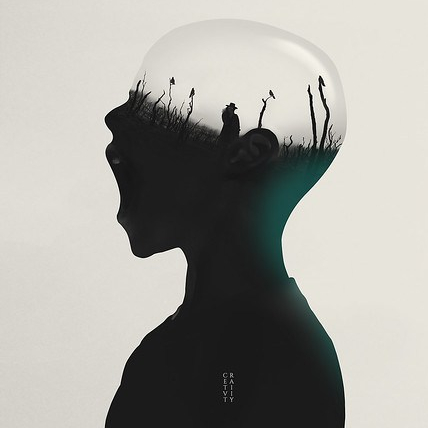In my work as a Technology Integrator, one of my greatest challenges was helping students and teachers see the potential for creativity that our new and ever changing technology afforded us. It was just too easy to use our devices simply for record keeping and consuming digitized content. Dr. Ruben Puentedura’s SAMR Model helped us understand how technology can transform teaching and learning, but in actual practice most teachers found it difficult to move beyond substitution or augmentation, and opportunities for activating our own and our students’ creativity were missed.
Michael Cohen, the Tech Rabbi, addresses the disconnect between creativity and teaching practice in his book Educated by Design: Designing the Space to Experiment, Explore, & Extract Your Creative Potential. He makes the argument that we all have the potential for creativity, and he’s careful to make clear distinctions between creativity and talent, and between skill and artistry. He illustrates the book with quotes and aphorisms meant to inspire teachers to develop a creative mindset and take the risks necessary to design learning opportunities that could unleash student creativity. He relates examples and anecdotes from his teaching successes and failures, and his last chapter includes activities and ideas that teachers can use to begin constructing their own creativity toolkit.

Cohen devotes a whole chapter to the role of empathy in the creative process, an idea that I found particularly interesting. Most creative process models begin with preparation and/or definition of a problem as the first step, but Cohen suggests that without empathy, proposed solutions to a problem are likely to fail. Although he presents empathy as a first step, he also demonstrates how it’s woven through the whole process and how it inspires creativity.
The chapter on collaboration is a must-read for all teachers. Anyone who has ever attempted group projects has probably observed the experience Cohen describes here. Generally when a group of students is assigned a challenge, one or two do all the work while the rest sit back and watch. I learned long ago (the hard way) that randomly assigning students to a group seldom promotes true collaboration. Each individual must feel that they are bringing something valuable to the process. Forming groups where students take on specific roles based on their strengths and interests and where they see a purpose to their work will lead to more successful outcomes.
Maybe our biggest takeaway from this book should be that teachers must be designers. So often we fall into a rut, doing things the same way year after year, often following a canned curriculum using someone else’s lesson plans. I have found that the greatest joy of teaching comes from designing a learning opportunity for students that inspires them to think creatively to answer an essential question or solve a real problem. Our challenge is to take the Tech Rabbi’s advice and ideas and use them to revise our own teaching practice.
Michael Cohen, the Tech Rabbi, will be the keynote speaker and presenter at the 2019 ACTEM Conference on Friday, October 11, and copies of Educated by Design will be available at the ACTEM store.








